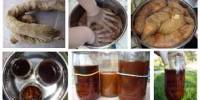Introduction
Enzyme & bleach are used in denim apparel washing .Acid enzyme & neutral enzyme both are used in denim apparel .Enzyme is more suitable than bleach for environment on the other hand bleach are suitable for production but it’s a hazardous in environment .So enzyme is more popular.
GARMENT WASHING:
The technology which is used to modify the appearance, out look comfort ability & fashion of the garments is called garment washing.
Since 1978, garments pre washing has become more and more popular. It began with denim jeans for the following reasons,
1) Before garments pre washing was done on jeans, consumers had to wash them at home before wearing them because before washing they were too stiff, too long and too big to wear.
2) After pre washing, the consumers do not have to worry about the fit after they wash them as pre washing has taken away almost all the shrinkage and made the jeans stable.
3) After pre washing the denim color looks more lively particular with the pronounced washed look left on the double needled seams.
Types of wet wash process:
- Normal wash/ garments wash/ rinse wash.
- Pigment wash.
- Caustic wash.
- Silicon wash.
- Stone wash.
- Enzyme wash.
- Stone Enzyme wash.
- Acid wash.
- Bleach wash.
- Tinting wash
Types of Dry wash process:
- Sand Blasting.
- Hands scraping.
- Over all wrinkles.
- Permanent wrinkle.
- Grinding &Destroy.
- Broken & tagging.
- P P Spray & P P Sponging.
- Etc.
TYPE OF MACHINE USED IN WASHING PLANT:
Sample washing Machine (Horizontal / Vertical Type)
Washing Machine (Side loading)
Washing Machine (Front loading)
Hydro extractor Machine
Dryer Machine (Steam)
Dryer Machine (Gas)
Chemical Mixture Machine
Industrial Oven (Gas/Electric)
Boiler
Submersible Pump
Grinding Machine
Tagging Machine
Steam chamber for crinkle
E.T.P (Effluent Treatment Plant)
Generator
Sand Blasting Gun
Sand Blasting chamber
Spray gun and dummy
Screw compressor
Laser draw
YPES OF CHEMICAL USE IN WASHING PLANT:
| 1. Enzyme | 2. Detergent |
| 3. Acetic Acid | 4. Anti-stain |
| 5.Bleaching powder | 6.Sodium hyposulfite |
| 7. Caustic Soda | 8. Soda Ash |
| 9. Sodium Bicarbonate | 10. potassium Permanganate |
| 11. cationic/nonionic Flax softener | 12. Micro Emulsion Silicon |
| 13. Salt (sodium chloride) | 14. Buffer |
| 15. Hydrogen peroxide | 16. Stabilizer |
| 17. Fixing | 18. Catanizer |
| 19. Optical Brightener | 20. Resin |
| 21. Sodium Metabisulphite | 22. Desizing agent |
Discussion about Denim enzyme wash:
What is denim?
Denim is a twill-weave woven & 100% cotton fabric that uses different colors for the warp and weft. One color is predominant on the fabric surface. Denim wears well and resists snags and tears. It is available in different weights and is usually made of cotton, although hemp denim is also available. Denim is commonly used for jeans and work clothes, as well as for casings for organic futons and pillows.
http://www.kidbean.com/what-is-denim/
Characteristics of Denim Fabric
- It is for long wearing.
- It is hard wearing.
- It is very strong and durable.
- It resists snags and tears
- It creases easily.
Denim are dye by indiga dye:
IndigoBackground
Indigo, or indigotin, is a dyestuff originally extracted from the varieties of the indigo and woad plants. Indigo was known throughout the ancient world for its ability to color fabrics a deep blue. Egyptian artifacts suggest that indigo was employed as early as 1600 B.C. and it has been found in Africa, India, Indonesia, and China.
The dye imparts a brilliant blue hue to fabric. In the dying process, cotton and linen threads are usually soaked and dried 15-20 times. By comparison, silk threads must be died over 40 times. After dying, the yarn may be sun dried to deepen the color. Indigo is unique in its ability to impart surface color while only partially penetrating fibers. When yarn died with indigo is untwisted, it can be seen that the inner layers remain uncolored. The dye also fades to give a characteristic wom look and for this reason it is commonly used to color denim. Originally extracted from plants, today indigo is synthetically produced on an industrial scale. It is most commonly sold as either a 100% powder or as a 20% solution
Denim fabric process :-
Desizing → Enzyme → Caustic → bleaching → Hypo → Softening → Hydro extractor→ Dryer m/c → Garments Delivery.
Discussion about enzyme wash:
Enzyme
What is enzyme:
Enzymes are proteins Bio catalyze.Its has huge life cell .The cell is the basic structural and functional unit of all known living organisms. It is the smallest unit of life that is classified as a living thing, and is often called the building block of life.Some organisms, such as most bacteria, are unicellular (consist of a single cell). Other organisms, such as humans, are multicellular. (Humans have an estimated 100 trillion or 1014 cells; a typical cell size is 10 µm; a typical cell mass is 1 nanogram.) The largest known cell is an unfertilized ostrich egg cell.In enzymatic reactions, the molecules at the beginning of the process are called substrates, and the enzyme converts them into different molecules, called the products. Almost all processes in a biological cell need enzymes to occur at significant rates. Since enzymes are selective for their substrates and speed up only a few reactions from among many possibilities, the set of enzymes made in a cell determines which metabolic pathways occur in that cell.
As all catalysts, enzymes do not alter the position of the chemical equilibrium of the reaction. Usually, in the presence of an enzyme, the reaction runs in the same direction as it would without the enzyme, just more quickly. However, in the absence of the enzyme, other possible uncatalyzed, “spontaneous” reactions might lead to different products, because in those conditions this different product is formed faster.
Furthermore, enzymes can couple two or more reactions, so that a thermodynamically favorable reaction can be used to “drive” a thermodynamically unfavorable one. For example, the hydrolysis of ATP is often used to drive other chemical reactions.
Enzymes catalyze the forward and backward reactions equally. They do not alter the equilibrium itself, but only the speed at which it is reached. For example, carbonic anhydrase catalyzes its reaction in either direction depending on the concentration of its reactants.
(in tissues; high CO2 concentration)
(in lungs; low CO2 concentration)
Nevertheless, if the equilibrium is greatly displaced in one direction, that is, in a very exergonic reaction, the reaction is effectively irreversible. Under these conditions the enzyme will, in fact, only catalyze the reaction in the thermodynamically allowed direction.
Enzyme Wash Finishes for Denim:
Enzyme wash is more popular in present world textile industries. Enzymes are bio chemical substances that are have as catalysts toward specific reactions. What makes very interesting the enzymes under a chemicals point of view is their high specificity or in other words, their ability to attack selectively on to a substrate.
Objective:
- To remove the size material from the garments.
- To remove the starch present on the garments.
- For soft feeling to wear the garments.
- To increase the color fastness and rubbing fastness.
- Especially develop the “Bio-polishing’’ affect cotton/Denim.
- Enzyme improves the anti-pilling properties.
- Enzyme attacks more the surface of the fabrics and gives a very smooth surface.
Types of Enzyme:
Mainly two types of Enzyme:
1. Acid Enzyme 2. Neutral Enzyme
a. Powder b. Liquid form.
After enzyme washing we get thise change:
- Color
- Gsm decrease
- Softener
- Strength
Decision:
Enzyme is suitable for environment .Enzyme is not hazardous but bleach is hazardous process. So enzyme is popular in washing sectors.
Denim for Bleach washing
What is Bleach:
A bleach is a chemical that removes colors or whitens, often via oxidation. Common chemical bleaches include household chlorine bleach, a solution of approximately 3–6% sodium hypochlorite (NaClO), and oxygen bleach, which contains hydrogen peroxide or a peroxide-releasing compound such as sodium perborate, sodium percarbonate, sodium persulfate, tetrasodium pyrophosphate, or urea peroxide together with catalysts and activators, e.g. tetraacetylethylenediamine and/or sodium nonanoyloxybenzenesulfonate. To bleach something is to apply bleach, sometimes as a preliminary step in the process of dyeing. Bleaching powder is calcium hypochlorite.
Many bleaches have strong bactericidal properties, and are used for disinfecting and sterilizing. Most bleaches are hazardous if ingested or inhaled, and should be used with care.
Chemical interactions:
Hypochlorite and chlorine are in equilibrium in water; the position of the equilibrium is pH dependent and low pH (acidic) favors chlorine
Cl2 + H2O H+ + Cl– + HClO
Chlorine is a respiratory irritant that attacks mucous membranes and burns the skin. As little as 3.53 ppm can be detected as an odor, and 1000 ppm is likely to be fatal after a few deep breaths. Exposure to chlorine has been limited to 0.5 ppm (8-hour time-weighted average—38 hour week) by OSHA in the U.S
Sodium hypochlorite and ammonia react to form a number of products, depending on the temperature, concentration, and how they are mixed. The main reaction is chlorination of ammonia, first giving chloramine (NH2Cl), then dichloramine (NHCl2) and finally nitrogen trichloride (NCl3). These materials are very irritating to eyes and lungs and are toxic above certain concentrations. Lastly there is bleach containing sodium perchlorate.
NH3 + NaOCl –> NaOH + NH2Cl
NH2Cl + NaOCl –> NaOH + NHCl2
NHCl2 + NaOCl –> NaOH + NCl3
Additional reactions produce hydrazine, in a variation of the Olin Raschig process.
NH3 + NH2Cl + NaOH –> N2H4 + NaCl + H2O
The hydrazine generated can further react with the monochloramine in an exothermic reaction.
2 NH2Cl + N2H4 –> 2 NH4Cl + N2
Industrial bleaching agents can also be sources of concern. For example, the use of elemental chlorine in the bleaching of wood pulp produces organochlorines, persistent organic pollutants, including dioxins. According to an industry group, the use of chlorine dioxide in these processes has reduced the dioxin generation to under detectable levels.However, respiratory risk from chlorine and highly toxic chlorinated byproducts still exists.
Chemistry:
The process of bleaching can be summarized in the following set of chemical reactions:
Cl2(aq) + H2O(l) H+(aq) + Cl–(aq) + HClO(aq)
The H+ ion of the hypochlorous acid then dissolves into solution, and so the final result is effectively:
Cl2(aq) + H2O(l) 2H+(aq) + Cl–(aq) + ClO–(aq)
Hypochlorite tends to decompose into chloride and a highly reactive form of oxygen:
ClO– Cl– + O2
This oxygen then reacts with organic substances to produce bleaching or antiseptic effects.
Mechanism of bleach action:
Color in most dyes and pigments is produced by molecules, such as beta carotene, which contain chromophores. Chemical bleaches work in one of two ways
- An oxidizing bleach works by breaking the chemical bonds that make up the chromophore. This changes the molecule into a different substance that either does not contain a chromophore, or contains a chromophore that does not absorb visible light.
A reducing bleach works by converting double bonds in the chromophore into single bonds. This eliminates the ability of the chromophore to absorb visible light.
Bleaching washing
This way be considered as a preparatory process of mercerizing ,dyeing, or printing .therefore proper bleaching should be carried out other wish the subsequent process would be fault.
Objective:
- To remove the size material from the garments.
- To remove the starch present on the garments.
- For soft feeling to wear the garments.
- To increase the color fastness and rubbing fastness.
- Especially develop the “Bio-polishing’’ affect cotton/Denim.
- Enzyme improves the anti-pilling properties.
- Enzyme attacks more the surface of the fabrics and gives a very smooth surface.
Different type of bleaching:
1) OXIDIZING AGENT:
- OZONE (O3)
- HYDOGEN PEROXIDE (H2O2)
- SODIUM HYPOCHLORIDE (NaOCl)
- SODIUM CHLORITE (NaClO2)
- POTASSIUM DICHROMATE (K2Cr2O7)
2) REDUCING AGENT
- ZINC DUST (ZnO)
- SODIUM HYPO-SULPHITE (Na2S2O2)
- HYDROGEN SULPHIDE (H2S)
Sodium hypochlorite(NaOCl): sodium hypochlorite is the salt of hypochlorous acid (HOCl )does not exist in the solid from but an aqueous solution of the same can be prepared . the stability of the solution of depend on :
- temperature
- the ph
- storage condition
- concentration
- presence of impurities
Reaction shown:
NaOCl +NaClO2 NaCl+NaClO2
This reaction having an activation energy of 20 kcal/mole. It is a very fast reaction.
Degradation of cotton by bleach:
When the cotton cellulose is treated with an aqueous solution of solution hypochlorite the decomposition of the hypochlorite takes place by different reactions:
3NaOCl 2NaCl+NaClO3
2NaOCl 2NaCl+O2
NaOCl+ cellulose NaCl + oxycellulose
Oxidation potential of the bleaching agent:
Oxidizing agents may be arranged in the increasing order of their oxidizing ability as following:
NaClO3>NaClO2>H2O2>K2Cr2O7>KMno4<NaOCl
Activation of sodium chloride :
It is well established that aqueous solution under alkaline condition are extremely stable, especially when stored away from light . As a result , alkaline solutions of sodium chlorite are rarely used f or beaching purposes .The solutions are activated by lowering the pH ,when their bleaching ability (oxidising power) is increased tremendously .These solution are decomposed by various reaction ,such as chlorine dioxide evolution ,chlorate formation and oxygen evolution and their relative extents depends on the pH .
Chemistry:
The process of bleaching can be summarized in the following set of chemical reactions:
Cl2(aq) + H2O(l) H+(aq) + Cl–(aq) + HClO(aq)
The H+ ion of the hypochlorous acid then dissolves into solution, and so the final result is effectively:
Cl2(aq) + H2O(l) 2H+(aq) + Cl–(aq) + ClO–(aq)
Mechanism of bleach action:
Color in most dyes and pigments are produced by molecules, such as beta carotene, which contain chromophores. Chemical bleaches work in one of two ways:
Oxidizing bleach works by breaking the chemical bonds that make up the chromophore. This changes the molecule into a different substance that either does not contain a chromophore, or contains a chromophore that does not absorb visible light.
Reducing bleach works by converting double bonds in the chromophore into single bonds. This eliminates the ability of the chromophore to absorb visible light
After bleach washing we get thise change:
- Color
- GSM decrease
- Softener
- Strength
Decision:
Bleaching is a hazards so it is harmful for environment & workers. So enzyme is popular then bleach .Its a hazardous process so its not suitable for environment.
Conclusion:
Finally, in denim washing our country has a bright future due to wide spread market of denim garments. We need thorough knowledge on denim treatment process and also on the fashion going around the world. And this project will be a guideline for them who are interested in the sector. pioneer in the field of hard washing. And we believe that this project will be a guideline for the washing plants in understanding and doing various treatments.
References:
- HAMS washing & dyeing Ltd.
- www.wikipedia. Com
- Class lectures
Book:
- Technology of bleaching & mercerizing (v.a.Shenai)
- http://www.ecplaza.net/tradeleads/seller/5014039/pumice_stone/.
- http://www.expresstextile.com/20030320/dyes2.shtml
- http://cotton.missouri.edu/Classroom GarmentWashFinishes/rom
















